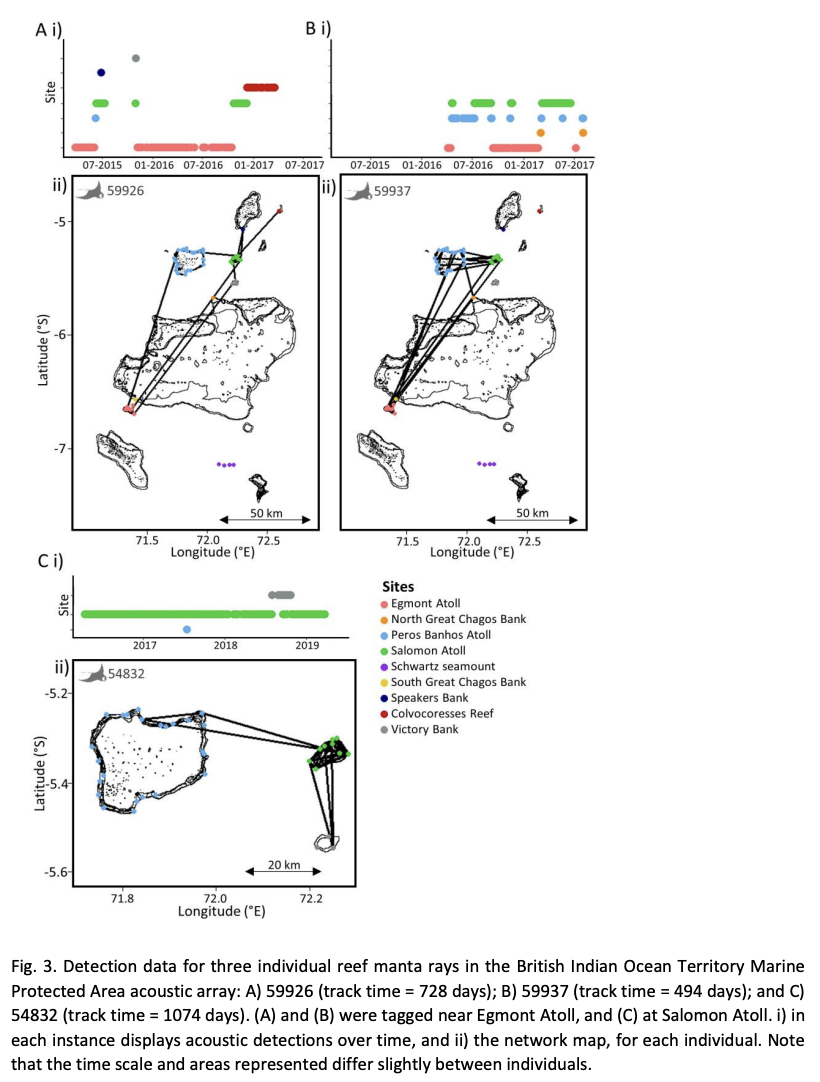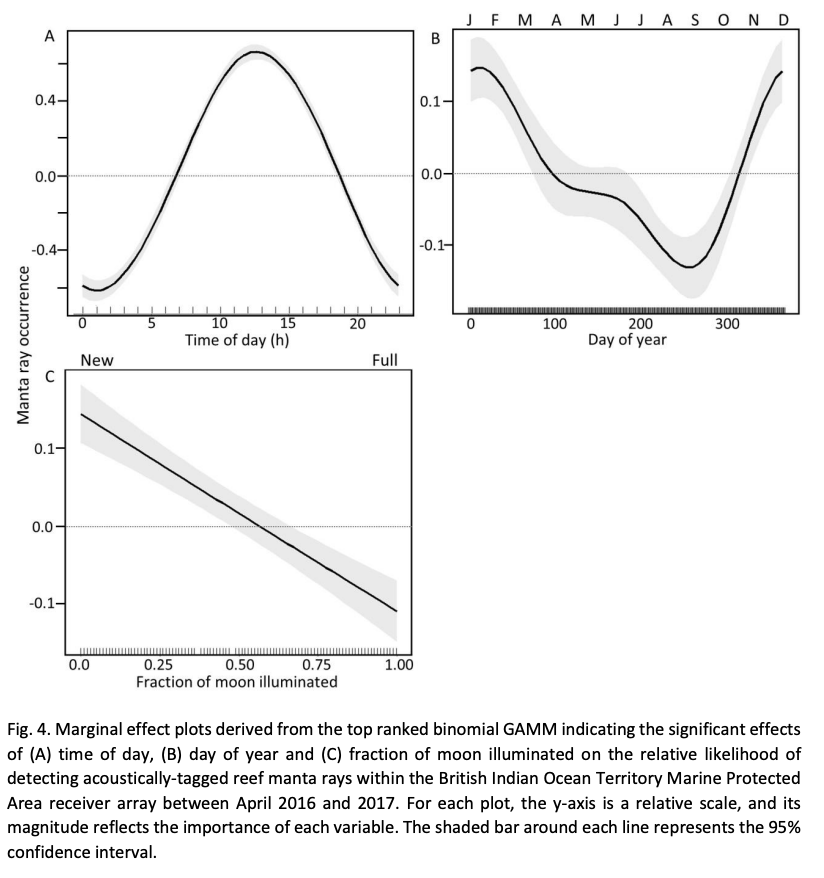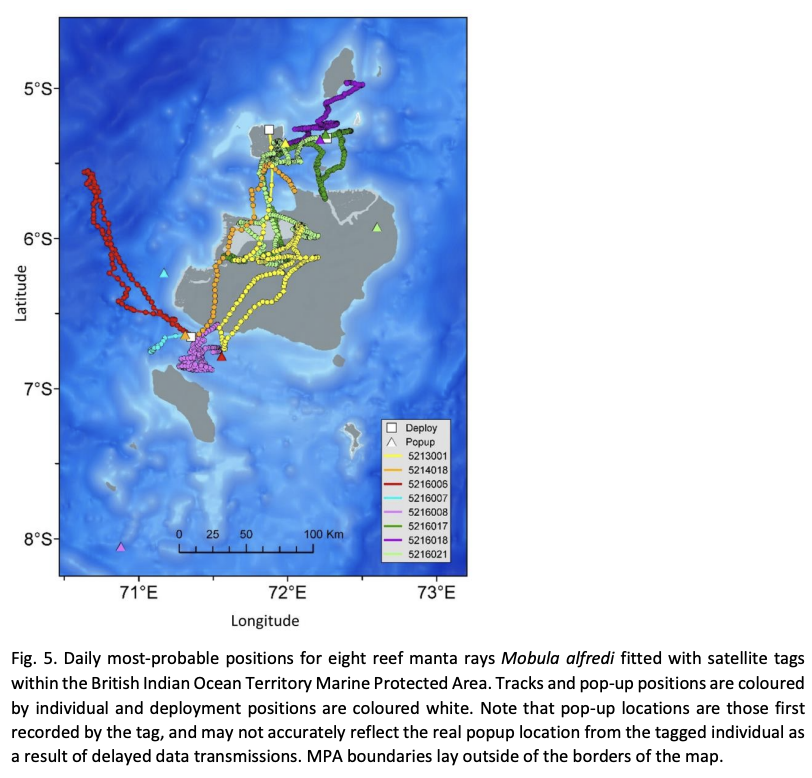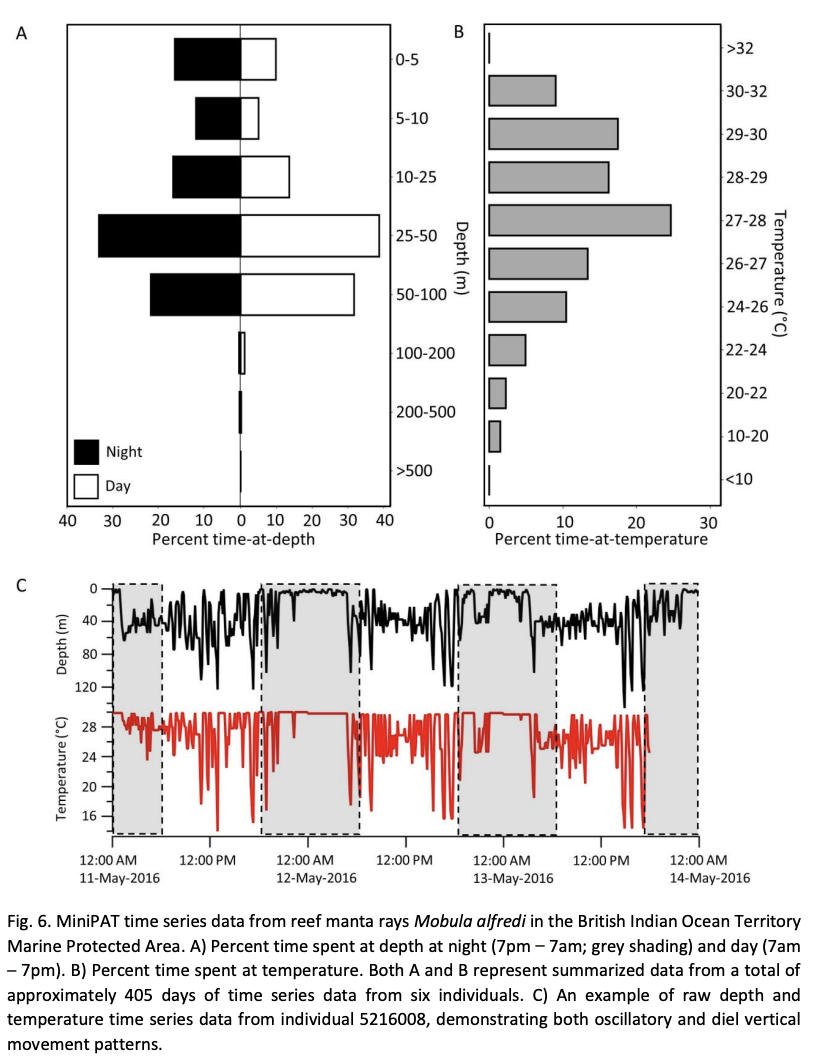Individual variation in residency and regional movements of reef manta rays Mobula alfredi in a large marine protected area
April 2020
Samantha Andrzejaczek, Taylor K. Chapple, David J. Curnick, Aaron B. Carlisle, Michael Castleton, David M. P. Jacoby, Lauren R. Peel, Robert J. Schallert, David M. Tickler & Barbara A. Block
Keywords: Biologging • Acoustic Telemetry • Satellite Telemetry • Reef Manta Ray • Site Fidelity • Elasmobranch • Conservation • Chagos Archipelago • Marine Protected Area (MPA)






Summary: Global mobulid populations, including reef manta rays, are declining due to targeted fisheries and other human threats. Understanding movement patterns is crucial for effective conservation. Acoustic and satellite tags were deployed on reef manta rays in the Chagos Archipelago Marine Protected Area. Individual manta rays showed diverse horizontal movement patterns, from local site fidelity to large-scale regional movements. Vertical movement patterns aligned with other elasmobranch species. The study suggests the BIOT MPA provides significant protection, but more research is needed to understand movement patterns across different age groups for comprehensive conservation.
Abstract
“Mobulid populations are declining on a global scale as a result of both targeted fisheries and indirect anthropogenic threats. In order to implement effective conservation strategies for species of this taxa, it is crucial that movement patterns at a range of spatiotemporal scales are defined. To gain insight into such patterns, we deployed a combination of acoustic (n = 21) and satellite (n = 12) tags on reef manta rays Mobula alfredi in the British Indian Ocean Territory Marine Protected Area (BIOT MPA) annually from 2013 through 2016. An extensive array of acoustic receivers (n = 52) were deployed across the archipelago to record the movements of mantas throughout the MPA. Data revealed large individual variation in horizontal movement patterns, ranging from high local site fidelity (<10 km) for up to 3 yr, to large-scale regional movements (>200 km) around the entire MPA. Depth time-series data recorded vertical movement patterns consistent with other epipelagic elasmobranch species, including oscillatory diving and deep dives to greater than 500 m. Though no individuals were directly recorded departing the MPA throughout the study, the gaps in detections and estimated travel speeds documented here indicate that movement of individuals outside of the BIOT MPA cannot be discounted. Collectively, our data suggests that, with effective enforcement, the current size of the BIOT MPA is providing substantial protection to its reef manta ray population. Characterization of movement patterns across ontogenetic classes, however, is required to fully characterize the spatial ecology of this species and ensure protection across all cohorts of the population.”
Author Affiliation
Hopkins Marine Station, Stanford University
Coastal Oregon Marine Station, Oregon State University
Institute of Zoology, Zoological Society of London
School of Marine Science and Policy, University of Delaware
School of Biological Sciences, Oceans Graduate School, The University of Western Australia
The Australian Institute of Marine Science
Marine Futures Lab, School of Biological Sciences, University of Western Australia
Funded by
Bertarelli Foundation
JSF Pollitzer Charitable Trust
The Rufford Foundation
Ernest Kleinwort Charitable Trust
